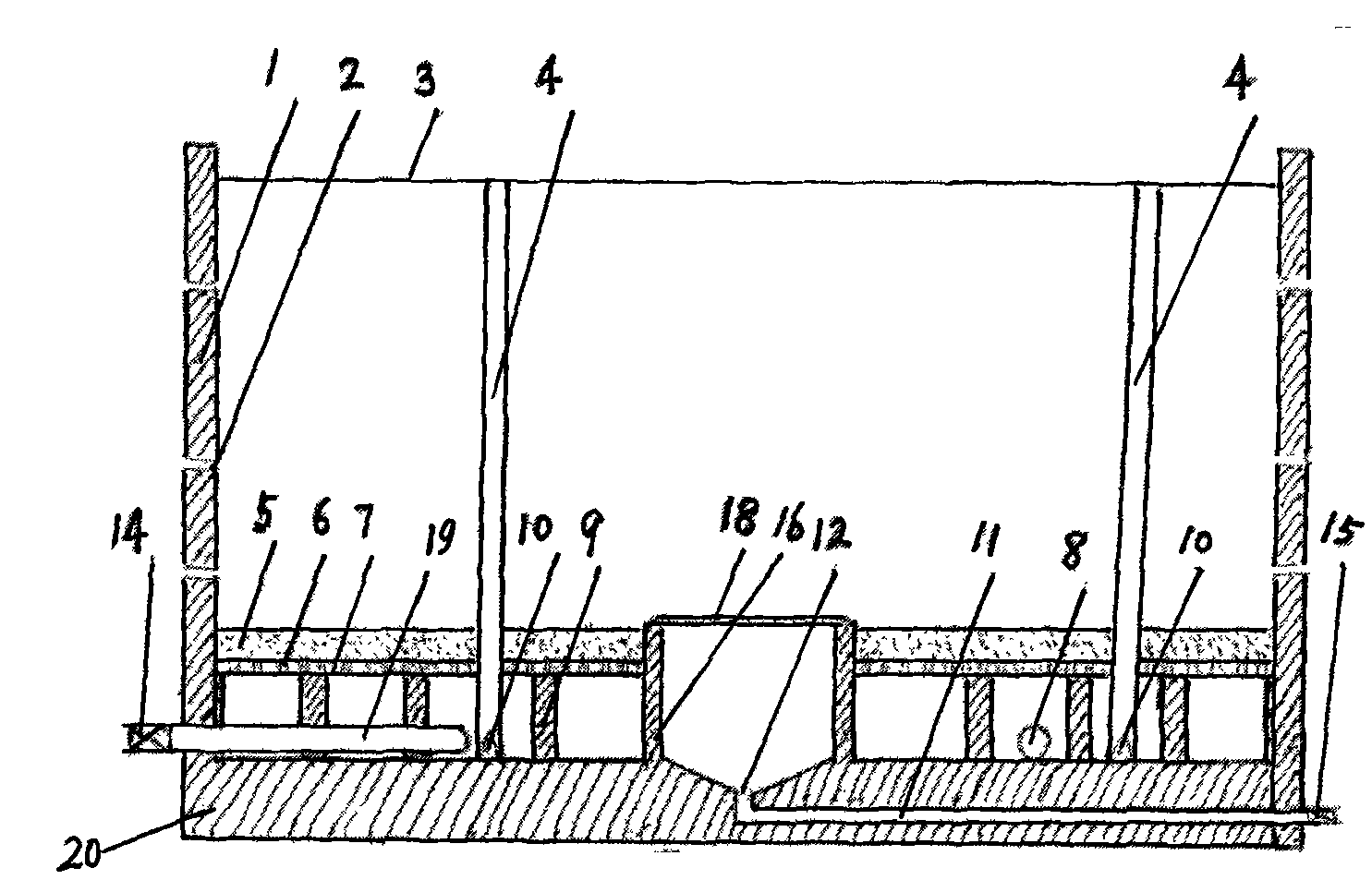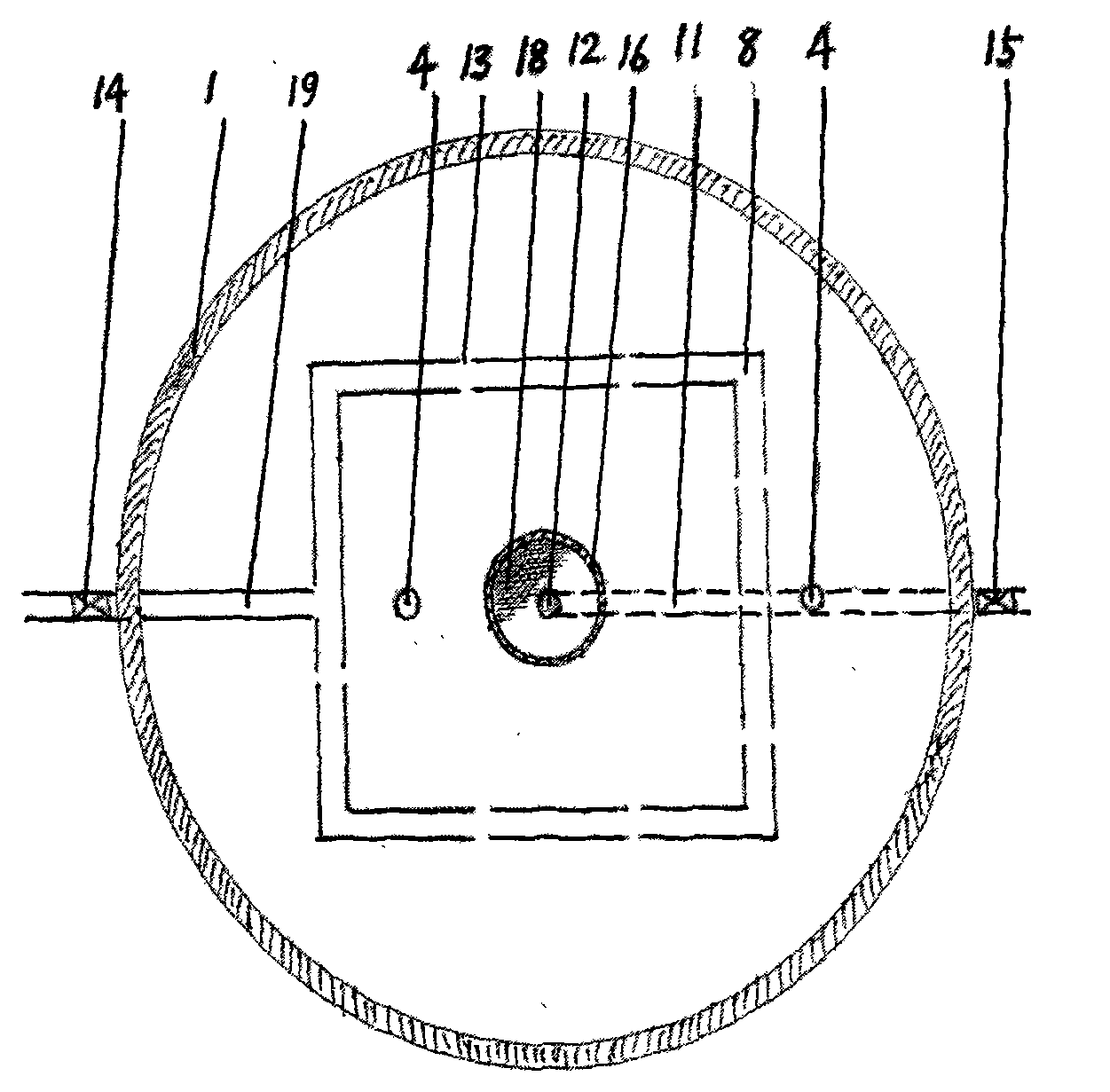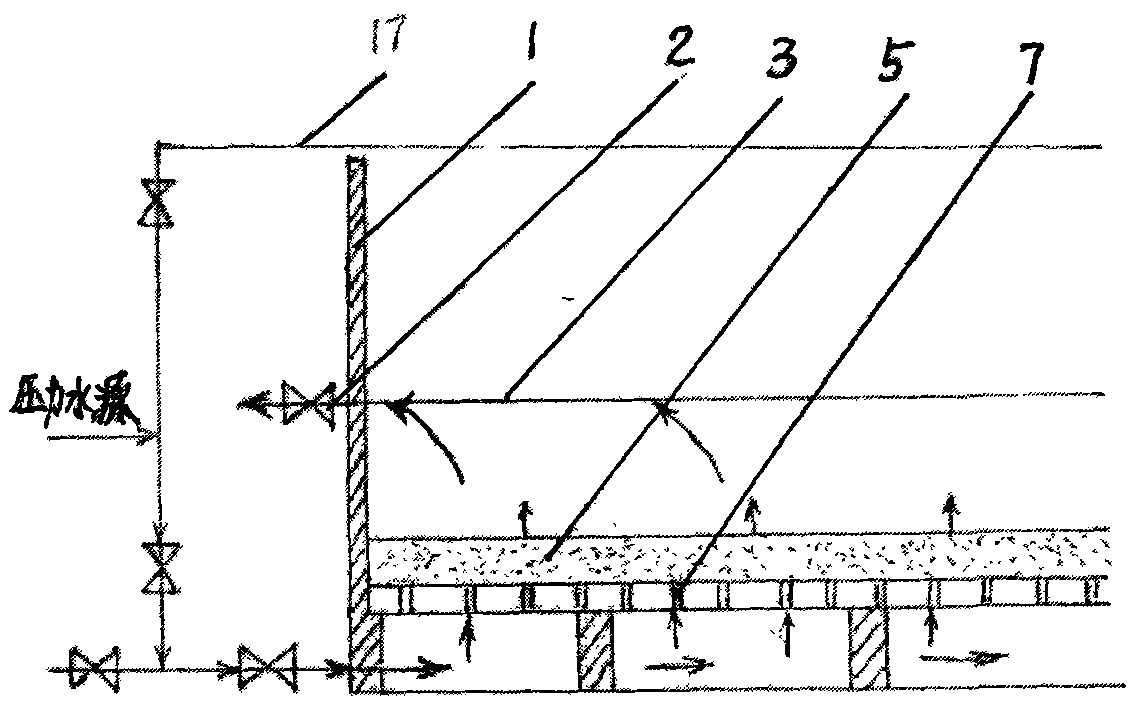Recoil two-layer automatic pollutant collection and discharge breeding method of Penaeus japonicus Bate and breeding device
A breeding method and recoil technology, applied in fish farming, application, climate change adaptation, etc., can solve the problems of black and stinky sand layer, rotten and smelly dirt, sand layer can not be too thin, etc. The effect of rapid, fresh environment and maintaining high health status
- Summary
- Abstract
- Description
- Claims
- Application Information
AI Technical Summary
Problems solved by technology
Method used
Image
Examples
Embodiment Construction
[0031] Breeding device of the present invention: the cylindrical pool wall 1 is connected with the base 20, and the base 20 is connected with the porous plate 7 connected to the inner wall of the pool wall 1 through several pillars 9, and the sand-blocking net 6 is arranged on the porous plate 7, and the sand-blocking There are sand layers 5 on the net 6, several rows (each row has several) overflow holes 2 are horizontally arranged on the cylindrical pool wall 1, and the overflow holes 2 are arranged on the cylindrical pool wall 1 circumference, up and down, left and right. Cloth, each hole is equipped with a plug or connected with a valve, the pool is provided with a gas upflow tube 4, the gas upflow tube 4 is connected to the base 20 through the sand layer 5, the sand retaining net 6 and the perforated plate 7 successively, and the gas upflow tube 4 is connected to the base 20. Flow pipe 4 lower tail end is provided with a plurality of water inlet holes 10, and upper end is ...
PUM
 Login to View More
Login to View More Abstract
Description
Claims
Application Information
 Login to View More
Login to View More - R&D
- Intellectual Property
- Life Sciences
- Materials
- Tech Scout
- Unparalleled Data Quality
- Higher Quality Content
- 60% Fewer Hallucinations
Browse by: Latest US Patents, China's latest patents, Technical Efficacy Thesaurus, Application Domain, Technology Topic, Popular Technical Reports.
© 2025 PatSnap. All rights reserved.Legal|Privacy policy|Modern Slavery Act Transparency Statement|Sitemap|About US| Contact US: help@patsnap.com



